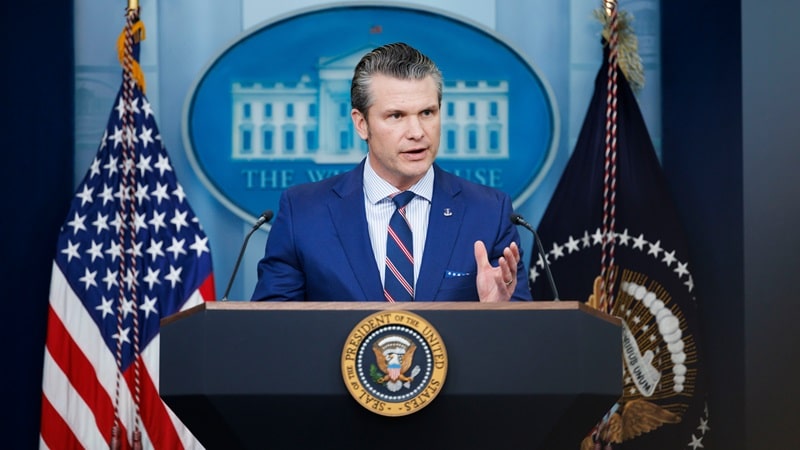
The U.S. Army is about to get a top-down “comprehensive transformation” courtesy of a new memo from Defense Secretary Pete Hegseth aimed at reorienting the service to deliver on President Trump’s “peace through strength” agenda.
“I am directing the Secretary of the Army to implement a comprehensive transformation strategy, streamline its force structure, eliminate wasteful spending, reform the acquisition process, modernize inefficient defense contracts, and overcome parochial interests to rebuild our Army, restore the warrior ethos, and reestablish deterrence,” Hegseth wrote.
One of the major changes the Army is being tasked with is overhauling its contracting processes, including “adopting performance-based contracts to reduce waste and expanding multi-year procurement agreements when cost-effective.”
The Army must also collaborate with the Office of the Secretary of Defense Comptroller to shift from “program-centric to capability-based funding across key portfolios” such as unmanned systems, counter-unmanned ariel systems, and electronic warfare, the Defense secretary ordered.
Hegseth also wants the Army to expand its use of Other Transaction Authority (OTA) agreements, which enable rapid prototyping and fielding, particularly for software.
Defense acquisition reform has become a key priority for the current administration. In a move to modernize the process, President Trump signed an executive order last month aimed at overhauling how the Pentagon acquires goods and services, including software. Leading the push for change, Hegseth has advocated for a transformation in procurement practices. The Army is the first branch of the military to undergo this review.
“Deterring war, and if required, winning on the rapidly evolving battlefield requires Soldiers who are physically and mentally resilient, rigorously trained, and equipped with the best technology available,” Hegseth emphasized.
However, these directives for change at the service won’t come with a blank check. Instead, Hegseth has mandated the elimination of wasteful programs and outdated equipment to pay for these changes within existing resources.
Priority investments must now align with the administration’s defense strategy. Key capabilities identified include long-range precision fires, air and missile defense – including through the Golden Dome for America missile defense project – cyber, electronic warfare, and counter-space systems.
“The Army must transform at an accelerated pace by divesting outdated, redundant, and inefficient programs, as well as restructuring headquarters and acquisition systems,” Hegseth wrote.
The Army’s workforce is also under review, to include downsizing, consolidating, or closing redundant headquarters. While no specifics were offered about whether the changes would affect civilian or military personnel, Hegseth ordered a “restructuring of the Army Force” to “ensure strategic readiness.”
Proposed changes include “merging Army Futures Command with Training and Doctrine Command into a single entity, combining Forces Command with Army North and Army South for homeland defense, and realigning elements of Army Materiel Command for better operational efficiency.”
The plan also calls for a review and consolidation of depots, arsenals, and installations, along with exploring leasing opportunities with private sector firms interested in entering the defense industrial base.
